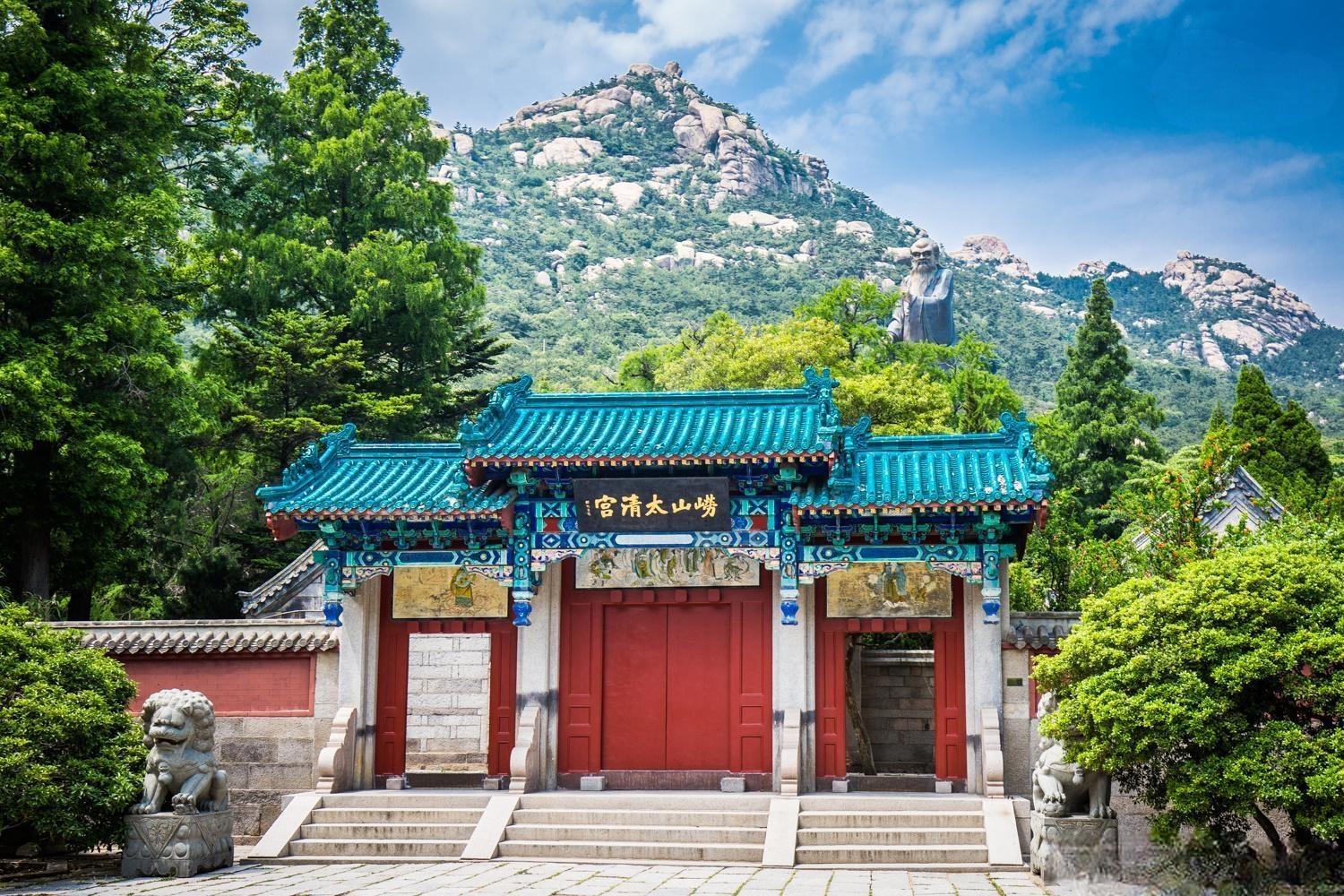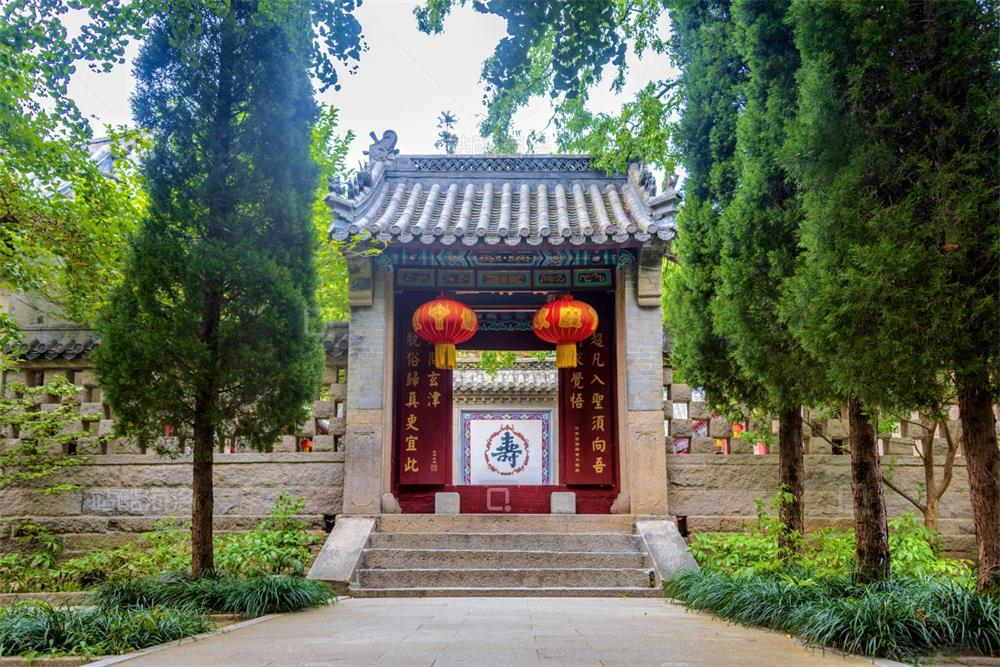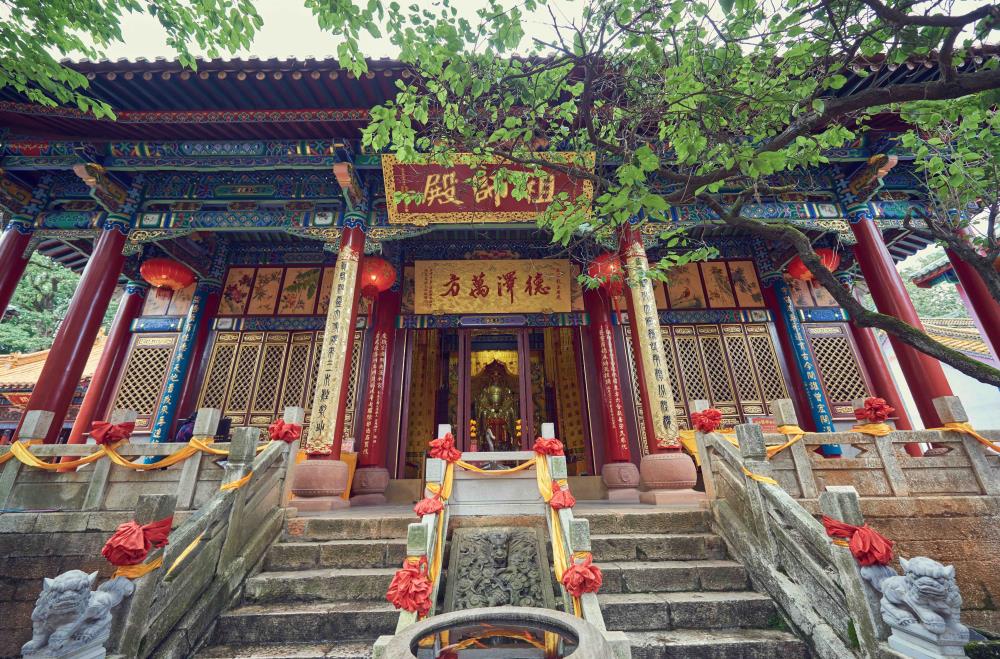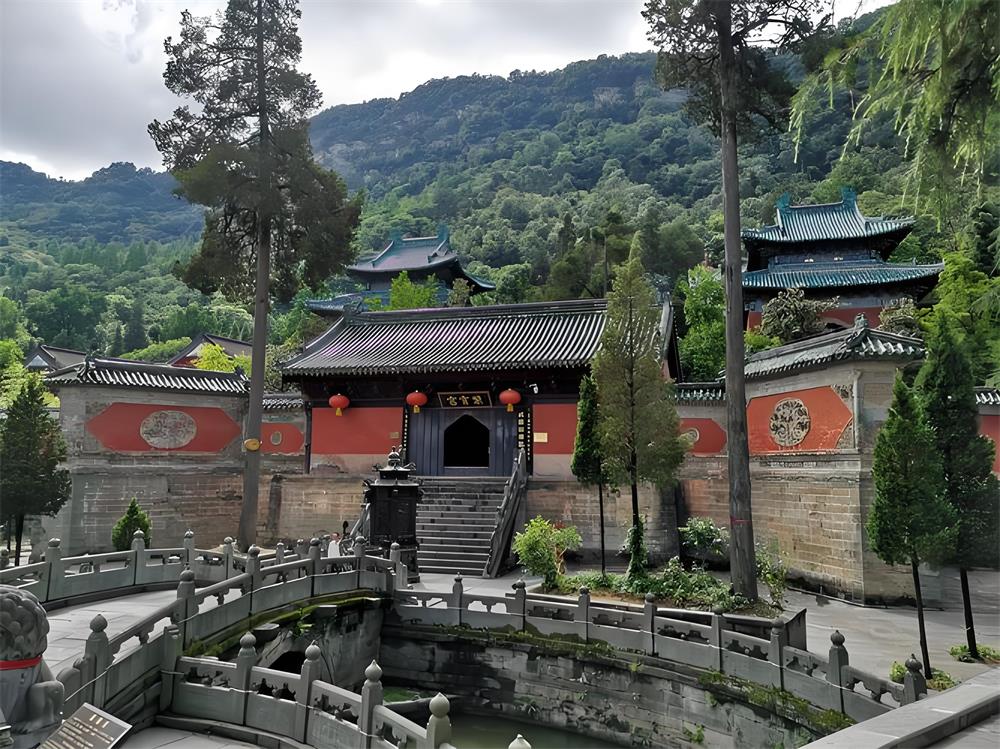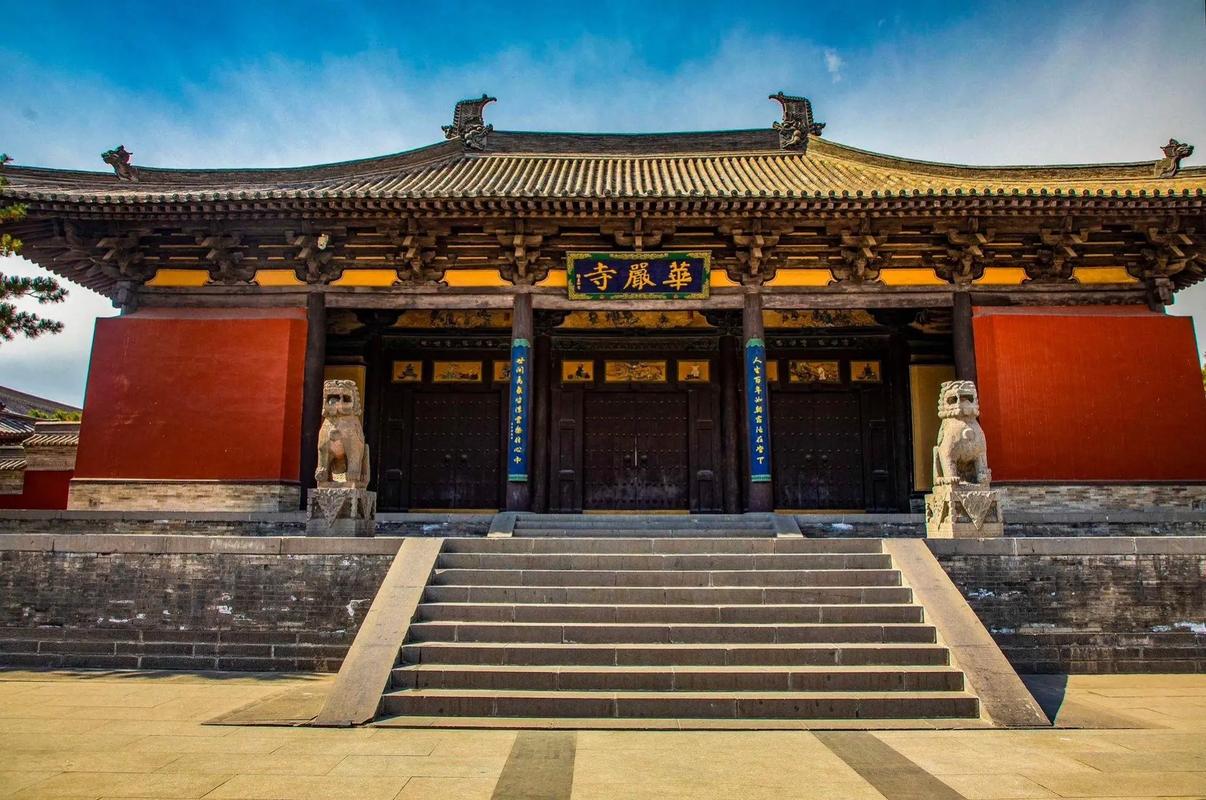Taiping Palace: The Seaside Sanctuary of Taoist Tranquility
Hidden among the lush green slopes of Shangyuan Mountain, facing the waves of Yanguo Bay in eastern Laoshan, Taiping Palace, also known as Temple of Supreme Peace, is one of the most spiritually atmospheric Taoist temples in all of Laoshan. Built into the mountainside and facing the sea, this sacred site has long been referred to as the “Palace Above the Ocean.”

The entrance is flanked by two ancient pine trees and twin boulders carved with the poetic inscriptions “As If in a Dreamland” and “Huagai Welcomes Guests.” These natural sentinels welcome visitors with the soft rustle of pine needles and a deep sense of otherworldly stillness.
A Gift from an Emperor
Taiping Palace traces its origin to the Song Dynasty in 961 CE, when the Taoist master Liu Ruozhuo—later honored as Huagai Zhenren—was summoned to the imperial court by Emperor Taizu of Song. Moved by Liu’s wisdom, the emperor bestowed generous funds for a Taoist sanctuary named “Taiping Xingguo Yuan”, meaning “Temple of National Peace and Prosperity.” In the Jin Dynasty, the temple was renamed Taiping Palace, and it has since undergone several restorations throughout the Ming and Qing dynasties.

The temple belongs to the Huashan branch of the Quanzhen School, one of the most influential Taoist traditions. It is a place not just of ritual, but of deep meditation, scholarly refinement, and connection to the rhythms of heaven and earth.
Architecture and Sacred Geometry
Taiping Palace features a two-courtyard design, with the main hall honoring the Jade Emperor, while the east and west side halls are dedicated to the Three Officials and Zhenwu (the True Warrior Deity) respectively. In total, the complex contains nine main halls and eight additional rooms, all built in the traditional hard gable style, spanning 2,500 square meters.
Above the gate, you’ll find the calligraphy “Palace Above the Ocean,” inscribed by Qing Dynasty calligrapher Hua Shikui. The back of the wall details the temple’s long history—its rise, fall, and rebirth.
Within the west courtyard lies a legendary stone dragon—the “Sleeping Dragon Stone”—coiled in eternal rest. Beneath it flows Dragon Saliva Spring, a crystal-clear wellspring used by temple monks for generations.
Mystic Echoes: Sacred Bells and Celestial Carvings
In the east courtyard stands the Bell Pavilion, home to a copper bell inscribed with hexagrams from the Book of Changes and the phrase “Peace for Nation and People.” Priests ring the bell during seasonal rites, following the Bagua directions to harmonize cosmic energy and pray for peace. The sound of the bell, known as the “Taiping Morning Chime,” is said to carry for miles through the mountains and sea mist.
Outside the main temple, you’ll find a treasure trove of spiritual landmarks: Youlong Cave, White Dragon Cave, Five Elements Stone, Sleeping Sheep Rock, and more. Cloud-covered and wind-kissed, this entire landscape feels like a scroll painting come to life—a realm suspended between heaven and earth.

Youlong Cave in particular is rich with Taoist heritage. Its inscription “A World Within a World” marks the gateway to a chamber honoring Taoist patriarchs Wang Chongyang, Qiu Chuji, and the other Seven Perfected Ones of the Quanzhen lineage. It is said that this cave once housed a statue of Laozi himself and served as a site for advanced spiritual practice.
Where Tao Meets the Sea
Though less known to international travelers, Taiping Palace offers one of the most poetic and immersive Taoist experiences in Laoshan. With its ancient inscriptions, mystical geography, and deep cultural layers, it continues to be a living temple where prayers echo with the sound of the waves.
At Fengshuicharm, we often perform blessings and energy rituals here. The gentle sea breeze, the pulse of dragon-shaped rocks, and the resonance of ancient bells make this palace a perfect place to offer charms of peace, abundance, and balance.
Whether you are seeking stillness, protection, or a deeper understanding of the Tao, the spirit of Taiping—Great Peace—is always present, waiting in the mountain mist.


